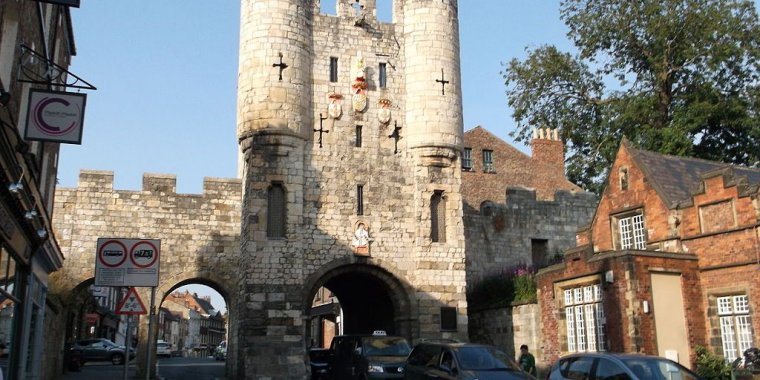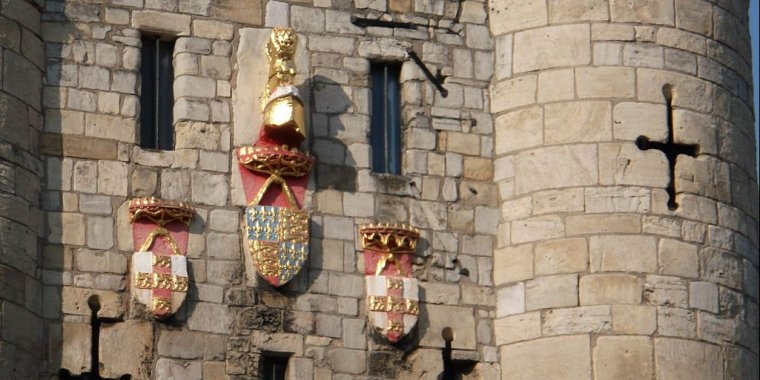| Published in Attractions / Places of Interest |
Micklegate Bar, York, England

Mickelgate Bar on York city walls. ![]()
The name of this four-storey-high gatehouse is from the Old Norse 'mykla gata' or 'great street', and leads onto Micklegate ('gate' is Norwegian for 'street' remaining from Viking influence in York). Micklegate Bar was first recorded in the 12th century, but reuses stone from an earlier Roman gate. It was the traditional ceremonial gate for monarchs entering the city, who, in a tradition dating to Richard II in 1389, touch the state sword when entering the gate.
The lower section was built in the 12th century while the top storeys in the 14th; the original barbican was removed in 1826. At least six reigning monarchs passed through this gate. Its symbolic value led to traitors' severed heads being displayed on the defences.
Following the Battle of Wakefield, a battle during the Wars of the Roses, the heads of Richard Plantagenet, 3rd Duke of York (father of Edward IV and Richard III), Edmund, Earl of Rutland (another son of Richard) and Richard Neville, 5th Earl of Salisbury were displayed on Micklegate Bar.

Mickelgate Bar on York city walls. ![]()
Micklegate Bar once had a barbican or outer gateway in front of it, which became ruinous and was demolished in 1826.
The Bar was inhabited until the 20th century. The upper two floors contain living quarters, which today are a museum known as the Henry VII Experience at Micklegate Bar. A restoration of the Bar was completed in late 2017.
Micklegate, YO1 6JX. Daily Apr-Oct 10AM-4PM, Nov-Mar 10AM-3PM weather dependant.
Free written guides available in eight foreign languages. Adult £5, child 5-16 years £3, concession £3.50. Includes admission to Henry VII Experience.
Sources
• www.wikivoyage.org
• www.wikipedia.org
YOU MAY ALSO LIKE





 If you own or manage a travel-related business such as a hotel, a bed-and-breakfast, a restaurant, a pub or a cafeteria, you can create a web page for your business for free on Titi Tudorancea Travel Info. » |
